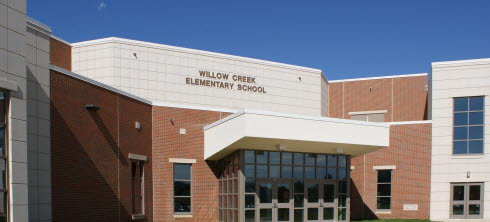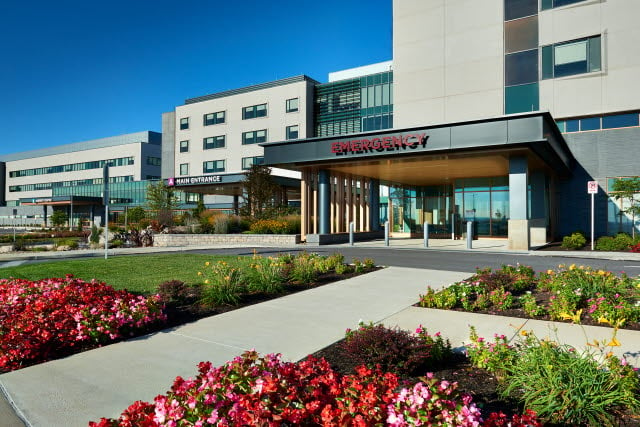Sustainable Concrete Architecture

Sustainable Building Materials for a Greener Tomorrow
Precast concrete contributed to green building practices in significant ways
-
Strong and Durable - The lower water-cement ratios possible with precast concrete mean it can be extremely durable.
-
Energy Efficient - The thermal mass of concrete allows the shifting of peak heating and cooling loads in a structure to help reduce mechanical-system requirements.
-
Less Waste - Factory-made in a controlled environment means little to no waste at the plant and then also reduces waste and debris on site.
-
Adapt - Load-carrying capacities, optimized cross-sections, and long spans possible with precast concrete members help eliminate redundant members.
-
Reuse - Concrete readily accommodates recycled content.
Strong and Durable
The primary ingredient of concrete- sand, gravel, and cement, are all mineral-based. When mixed with water, the cement chemically reacts to create a crystalline matrix with high compressive strength. This matric binds the sand and gravel together, creating concrete.
Unlike other construction materials that can rust, rot, or otherwise degrade when in the presence of moisture, concrete can actually get stronger if there are unhydrated cement particles available to react with the water!
Energy Efficient
Thermal Benefits
The thermal mass of precast concrete absorbs and releases heat slowly, shifting air conditioning and heating loads to allow smaller, more efficient heating, venting, and air conditioning (HVAC) systems. Insulation is often used in architectural panels and sandwich wall panels to increase thermal efficiency, with continuous insulation in walls being possible.
The result savings are significant - up to 25% on heating and cooling costs!
The financial payback of a green building practice is measured in the operating and maintenance savings over time offsetting the initial costs of sustainable features. In the case of a precast building, costs can be countered during the construction process when you are able to reduce the HVAC systems due to continuous insulation.
Adapt & Reuse
Precast Concrete structures have the flexibility for many adaptive reuse possibilities.
Adaptable
Precast concrete members are unique in that they are individually engineered products that can be disassembled. Designers can easily plan future additions to buildings because the precast concrete components can be rearranged. Once removed, precast concrete members may also be reused in other applications.
Precast Concrete structures also can be manipulated to fit other needs. The flexibility to rearrange components means that walls could be added or removed to create a different space. For example, an precast concrete abandoned shopping mall was adapted to be a school with classrooms and offices.
Recycling
Precast concrete is also friendly to downcycling, in which building materials are broken down because it comes apart with a minimum amount of energy and retains its original qualities. Breaking down old panels to become concrete aggregate in a new mix for future buildings.
Precast concrete's in-place performance can improve when several common industrial by-products are added. Fly ahs, slag, and silica fume, which would otherwise go into landfills, can be incorporated into concrete as supplementary materials. These by-products can also reduce the amount of cement that is used in concrete. Reinforcement is typically made from recycled steel. Insulation and connections within the precast concrete also contain recycled content.
Sustainability FAQs
Is precast concrete a green building material?
Precast concrete contributes to green building practices in significant ways. The lower water-cement ratios possible with precast concrete (in the range of 0.36 to 0.38) mean that it can be extremely durable. The thermal mass of concrete allows the shifting of peak heating and cooling loads in a structure to help reduce mechanical-system requirements. Because precast concrete is factory-made, there is little waste created in the plant (most plants employ exact-batching technologies) and it reduces construction waste and debris on site, reducing construction indoor air quality concerns. The load-carrying capacities, optimized cross-sections, and long spans possible with precast concrete members help eliminate redundant members, and concrete readily accommodates recycled content.
What is sustainability and why is it important?
The United Nations Brundtland Commission Report (1987) defined sustainable development and urged the world to take note: “Sustainable development is that which meets the needs of the present without compromising the ability of future generations to meet their own needs.” A growing global population is straining the finite resources available on the planet. Sustainability seems to balance the economic, social, and environmental impacts, recognizing that population growth will continue. Sustainable development brings this evaluation to the design and construction industries, which have significant potential to reduce the negative impact of human activities on the environment.
Do government projects require LEED certification?
More and more local, regional, and national government agencies require sustainable building practices or LEED certification. The General Services Administration (GSA), U.S. Army, Department of State Department of Energy (DOE). And Environmental Protection Agency (EPA) is adopting LEED or similar green-building standards. Twenty-five states including California, New York, Washington, and Oregon have adopted LEED as have over 100 municipalities.
How can I measure the costs and benefits of sustainable design?
Most project teams perform a comprehensive life-cycle cost assessment (LCC) prior to defining their sustainable goals for the project. The LCC predicts how long it will take to recoup the additional first cost.
Resources
Featured Projects
Willow Creek Elementary
The two-story, 108,000 ft2 Willow Creek Elementary School was built in response to increased enrollments at the elementary school level. The school opened for the 2009-2010 academic year and features 44
Statue of Liberty Museum and Screening Facility
At this iconic location, now stands resilient structures that are dynamic in expression and were inspired by the irregularity of the water’s
Hamburg Elementary School (Tilden)
An outstanding thermal performance was achieved at Hamburg Elementary school (Tilden) with CarbonCast walls. Amid skyrocketing energy costs and heightened
Nassau 8th Precinct
Following Hurricane Sandy in 2012, many structures owned by Nassau County in New York state were evaluated for structural damage, including the police precincts. Prior to the storm...
ELEVATE YOUR PRECAST DESIGN.
Have a question about our precast design options? That's what we are here for. Reach out to our team of precast design engineers with any questions or details about your project and we will get back to you.










